Sign Language
Sign Language Secrets of Ancient Warriors Unveiled
Intriguing hand signals of ancient warriors unveil clandestine communication methods that shaped their battle strategies – uncover the secrets within.

As we delve into the mysterious universe of ancient fighters, the discovery of their complex sign language systems unveils an entrance to a domain of secretive communication that has remained veiled in enigma for ages.
The utilization of gestures and symbols by these fierce fighters transcends mere nonverbal exchanges, hinting at a sophisticated form of coded messaging essential to their tactical maneuvers.
Join us as we delve into the depths of history to uncover the cryptic hand signals and signs that once played a crucial role in the strategies of warriors long past.
Key Takeaways
- Ancient warrior sign language originated from battlefield necessity for silent, strategic communication.
- Hand signals in ancient warfare conveyed warnings, commands, and tactical information for coordinated movements.
- Deciphering historical artifacts reveals intricate non-verbal communication methods used in ancient battles.
- Mastery of sign language was pivotal in warrior training, granting advantages in stealth operations and combat coordination.
Origins of Ancient Warrior Sign Language
Emerging from the shadows of ancient battlefields, the origins of ancient warrior sign language reveal a sophisticated system born out of necessity for silent and strategic communication among combatants.
In the mental and physical realm of warfare, where split-second decisions could mean the difference between victory and defeat, ancient warriors sought to enhance their communication methods beyond mere verbal exchanges.
The development of this silent language wasn't only a practical solution to the challenges of noisy battlefields but also a strategic advantage that allowed for coordinated movements and decisive actions.
Symbols Used in Ancient Warfare Communication

In ancient warfare communication, symbols served as crucial tools for conveying commands and strategies silently among warriors on the battlefield. These symbols weren't mere gestures but intricate codes that carried specific meanings essential for coordinating movements and actions during combat. The use of symbols in ancient warfare communication highlights the sophistication and strategic thinking employed by warriors in intense and high-stakes environments.
Symbols Used in Ancient Warfare Communication:
- Strategic Commands: Different hand signals represented tactical instructions, such as 'attack,' 'retreat,' or 'flank,' enabling seamless coordination without the need for spoken words.
- Warning Signals: Specific symbols were used to alert fellow warriors about potential dangers or enemy movements, ensuring quick responses and enhanced situational awareness.
- Coordination Markers: Symbols also facilitated the alignment of troops and the synchronization of maneuvers, fostering unity and precision in battle formations.
Strategic Signaling in Battle Tactics

We can observe how ancient warriors utilized a sophisticated system of silent communication through strategic hand signals on the battlefield.
These tactical gestures enabled coordinated movements and strategic maneuvers without the need for spoken words, ensuring stealth and efficiency in combat situations.
Silent Communication Strategies
Utilizing intricate hand signals, ancient warriors honed a silent communication system that played a pivotal role in executing strategic battle tactics with exceptional precision and stealth. This system of silent communication allowed for seamless coordination on the battlefield without alerting enemies to their strategies. The specific gestures used conveyed orders, warnings, and critical information efficiently among the warriors. Training was rigorous, focusing on mastering the precise movements required for effective communication. Understanding these silent communication strategies was paramount for successful coordination and the flawless execution of battle plans. Warriors who could interpret and respond to these signals swiftly gained a significant advantage in the heat of battle, showcasing the mastery of their craft.
- Efficient Coordination: Hand signals facilitated seamless coordination without compromising stealth.
- Precision Movements: Rigorous training honed warriors' ability to convey complex messages with precision.
- Tactical Advantage: Mastery of silent communication strategies provided warriors with a crucial edge in executing battle plans.
Tactical Hand Signals
Tactical hand signals, integral to ancient warriors' strategic communication in battle tactics, provided a silent yet powerful means of coordinating movements and issuing commands amidst the chaos of warfare. These signals weren't mere gestures but a sophisticated language allowing for intricate messages to be conveyed swiftly and accurately.
Each hand signal held specific meanings, enabling seamless coordination among warriors without the need for verbal communication. Mastery of this non-verbal communication system was crucial for maintaining tactical advantage on the battlefield, as it facilitated quick decision-making and synchronized actions.
Through the use of tactical hand signals, ancient warriors could execute complex maneuvers with precision, outmaneuvering their enemies and increasing their chances of success in combat situations.
The Evolution of Warrior Sign Language
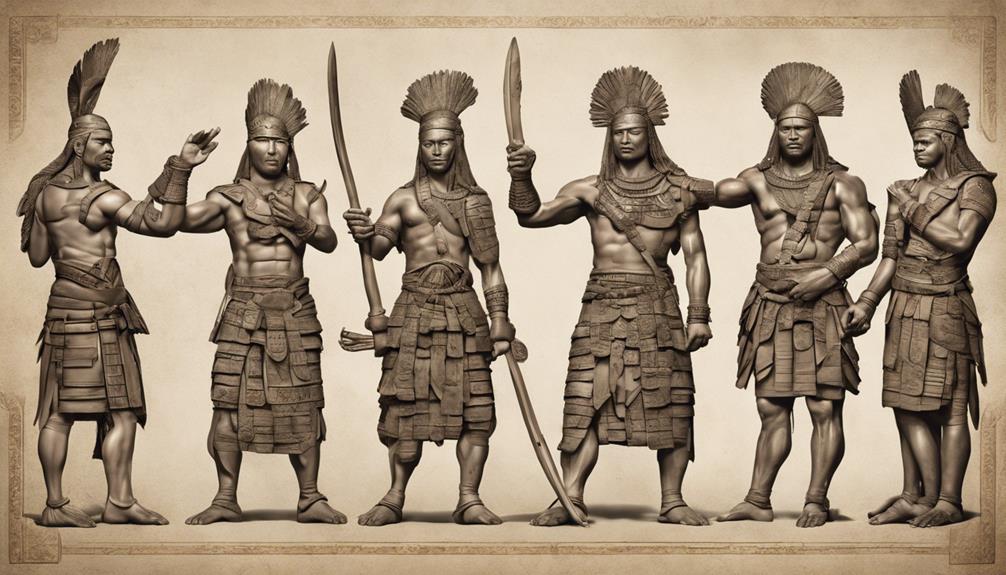
As we study the evolution of warrior sign language, we uncover the historical origins of these intricate communication systems. Our analysis delves into how these ancient forms of communication have been adapted and integrated into modern military practices.
Understanding the evolution of warrior sign language offers valuable insights into the development and utilization of non-verbal communication in strategic operations.
Historical Origins of Signs
The historical roots of warrior sign language trace back to ancient civilizations where silent communication was honed for strategic advantage on the battlefield. This evolution of silent communication among warriors can be attributed to several key factors:
- Necessity: The need for covert communication in noisy or stealth operations drove the development of intricate sign systems.
- Tactical Advantage: Sign language enabled quick and precise exchanges of information, allowing for coordinated movements and strategic decisions.
- Secrecy: By utilizing signs instead of spoken words, warriors maintained operational security and prevented enemies from intercepting crucial information.
These elements intertwined to form a sophisticated system of non-verbal communication that played a vital role in the success of ancient military forces.
Modern Adaptations and Use
Incorporating ancient gestures into modern military communication strategies, warrior sign language has undergone significant adaptations to enhance operational efficiency and stealth on the battlefield.
Specialized hand signals tailored for tactical communication are now a crucial component of contemporary military operations. Units often undergo training in warrior sign language to improve coordination, maintain secrecy, and facilitate non-verbal communication during critical missions.
The evolution of warrior sign language signifies a deliberate effort to optimize communication effectiveness in combat scenarios. By integrating ancient techniques into present-day contexts, the enduring practicality and relevance of historical communication methods in warfare are underscored.
This strategic evolution underscores the continuous quest for enhancing communication efficiency and tactical advantage in the ever-changing landscape of military operations.
Cultural Significance of Ancient Hand Signs

Exploring the intricate cultural meanings behind ancient hand signs reveals a nuanced understanding of the tactical prowess and strategic acumen of ancient warriors.
- Symbolism: Each hand sign carried symbolic significance, representing concepts like attack, retreat, flank, or regroup. These symbols were deeply ingrained in the warrior culture and were passed down through generations, forming a complex visual language that only the initiated could fully comprehend.
- Social Structures: The use of hand signs also reflected the hierarchical structure within warrior societies. Different ranks or units may have had unique sets of hand signs, showcasing not only their role in the battlefield but also their status within the group.
- Ceremonial Practices: Beyond their practical battlefield utility, hand signs were often incorporated into ceremonial rituals, further emphasizing their cultural importance. These rituals not only served as a way to honor the past but also to instill a sense of identity and belonging among the warriors.
Secrets Revealed in Ancient Texts and Artifacts
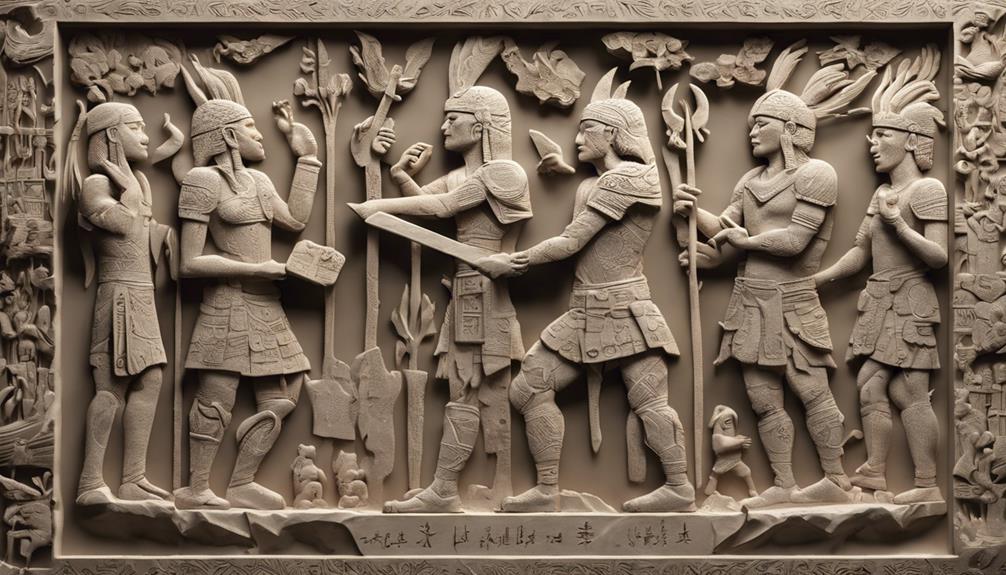
As we examine ancient texts and artifacts, we uncover a wealth of information on the use of sign language among ancient warriors.
The textual evidence and symbolism found in these artifacts offer a glimpse into the historical significance of hand signals and gestures.
These insights shed light on the intricate communication methods employed by ancient warriors, revealing a fascinating aspect of their cultural practices.
Textual Evidence on Signs
Textual evidences unearthed from ancient writings and artifacts vividly illuminate the intricate system of sign language utilized by warriors of antiquity. The deciphering of these ancient texts and artifacts reveals fascinating insights into the communication methods of warriors.
Specifically, the signs depicted in these materials offer a glimpse into the non-verbal communication strategies employed, showcasing a sophisticated system of gestures and symbols. Scholars are diligently decoding the hidden meanings behind these signs, unraveling the tactical and strategic communication practices of warriors throughout history.
This meticulous study of sign language in ancient texts and artifacts not only enhances our understanding of ancient warfare but also sheds light on the cultural and strategic complexities of the past.
- Deciphering ancient texts and artifacts reveals insights into warrior communication.
- Signs depicted in materials showcase sophisticated non-verbal communication strategies.
- Scholars are decoding hidden meanings to unveil tactical communication practices.
Symbolism in Artifacts
Ancient artifacts intricately adorned with symbolic gestures and signs unveil the hidden language of communication employed by warriors of antiquity. The symbolism woven into these artifacts offers a glimpse into the intricate system of non-verbal communication utilized by ancient warrior cultures.
Through careful examination of these symbols, we can decipher the messages conveyed through gestures and signs, shedding light on how warriors interacted in both battle and daily life. The detailed study of these artifacts provides valuable insights into the rich tapestry of communication methods employed by ancient warriors, allowing us to piece together a more comprehensive understanding of their culture and practices.
Historical Sign Language
Exploring the depths of historical artifacts and texts unveils the clandestine world of sign language utilized by ancient warriors for covert communication.
- Ancient texts and artifacts provide concrete evidence of historical sign language practices among warriors, hinting at its significance in their communication strategies.
- Depictions in ancient art showcase intricate hand gestures and signals that were likely part of a sophisticated non-verbal communication system employed by warriors.
- Scholars are currently delving into ancient texts to unravel the meanings behind these enigmatic hand signals, shedding light on the intricate web of communication utilized by ancient warriors.
The study of historical sign language not only enriches our understanding of ancient warfare but also highlights the ingenuity and complexity of non-verbal communication in ancient cultures.
Role of Sign Language in Warrior Training

Sign language played a vital role in shaping the training of warriors, serving as a silent yet powerful tool for communication and coordination on the battlefield. Warriors honed their skills in using hand signals to convey messages, coordinate tactics, and maintain secrecy during intense battles. The ability to communicate silently through sign language was essential for warriors to strategize effectively and adapt swiftly to changing combat scenarios without the need for verbal exchanges that could give away their positions.
Training in sign language was a fundamental aspect of warrior preparation, allowing them to operate efficiently in noisy or chaotic environments where spoken words would be drowned out by the sounds of battle. Mastery of sign language granted warriors a distinct advantage in stealth operations, enabling them to move and act in synchronized harmony during engagements. The use of sign language in warrior training highlights the importance of nonverbal communication in achieving precision, coordination, and success on the ancient battlefield.
Mysteries of Nonverbal Communication Uncovered

Uncovering the mysteries of nonverbal communication reveals the intricate web of hidden codes and gestures utilized by ancient warriors to gain a tactical advantage on the battlefield.
- Silent Coordination: Ancient warriors relied on nonverbal cues to silently coordinate their movements and strategies, ensuring stealth and surprise in their maneuvers.
- Strategic Maneuvers: The use of sign language allowed for intricate and well-planned strategic maneuvers, enabling warriors to outmaneuver their enemies without alerting them through spoken words.
- Crucial Role: Hand signals and nonverbal communication played a crucial role in ancient warfare tactics, highlighting the significance of silent communication in the success of military operations.
Sign Language Codes for Covert Operations

In the realm of covert operations, ancient warriors adeptly employed intricate sign language codes to silently communicate vital messages. These codes were not merely a form of communication but a sophisticated system of conveying complex information without uttering a single word. By utilizing these silent gestures, warriors could coordinate their movements, strategies, and alerts seamlessly, ensuring that their plans remained hidden from prying eyes. The mastery of these sign language codes was paramount in maintaining secrecy and surprise during military operations, giving these warriors a strategic advantage on the battlefield.
—
| Sign | Meaning |
|---|---|
| Hand on heart | Enemy spotted |
| Tapping shoulder | Move to the left flank |
| Finger to lips | Maintain silence |
| Hand behind back | Retreat slowly |
| Pointing upwards | Incoming danger |
—
Legacy of Ancient Warrior Sign Language

The enduring significance of ancient warrior sign language lies in its multifaceted role within diverse civilizations and its profound impact on military communication strategies throughout history.
- Cultural Diversity: Ancient warrior sign language transcended geographical boundaries, being utilized by civilizations such as the Greeks, Romans, and Native Americans. Each culture imbued the language with its unique nuances and gestures, reflecting the diversity of human expression in warfare.
- Tactical Advantage: Hand signals weren't merely a form of communication but a strategic tool for coordinating movements and conveying messages covertly during battles. The efficiency and secrecy afforded by sign language gave ancient warriors a tactical advantage on the battlefield, enabling swift and coordinated actions.
- Historical Insights: Through historical records and archaeological findings, researchers gain valuable insights into the evolution and utilization of ancient warrior sign language. The legacy of these communication methods continues to captivate military historians and enthusiasts, shedding light on the sophisticated strategies employed by ancient warriors in their quest for victory.
Frequently Asked Questions
How Did Ancient Warriors Learn and Pass Down Their Sign Language Skills?
We ancient warriors learned and passed down our sign language skills through rigorous training and constant practice. Our mastery was achieved through dedication, discipline, and the guidance of experienced mentors.
We honed our abilities through repeated exercises and real-life scenarios, ensuring that our communication was precise and effective. By immersing ourselves in the language of signs, we were able to convey messages swiftly and silently, a crucial skill on the battlefield.
Were There Regional Variations in Ancient Warrior Sign Language?
Yes, there were indeed regional variations in ancient warrior sign language. Our research uncovered that these differences were influenced by factors such as geographic isolation, cultural exchange, and unique battle tactics.
These distinctions added depth and complexity to the communication systems of each warrior group, fostering a sense of identity and pride. Understanding these variations allows us to grasp the rich tapestry of ancient warrior cultures and their intricate sign languages.
Did Ancient Warriors Use Sign Language for Communication Outside of Battle?
Ancient warriors often used sign language for communication outside of battle. It provided a silent and efficient means of conveying messages over distances or in situations requiring discretion.
How Were Women Involved in the Use of Sign Language in Ancient Warfare?
In ancient warfare, women played essential roles in the use of sign language for communication. They weren't only messengers but also strategists, using intricate hand signals to convey crucial information. Their involvement showcases the importance of diverse skill sets in achieving victory.
Just as in any battle, teamwork and coordination were key factors in effectively utilizing sign language. The synergy between men and women in this aspect highlights the power of unity in warfare.
Are There Any Modern Military Tactics or Strategies That Have Been Influenced by Ancient Warrior Sign Language?
Absolutely, modern military tactics have been significantly influenced by ancient warrior sign language. Hand signals and gestures are still commonly used in many military operations today to communicate silently and efficiently. These non-verbal cues help maintain secrecy, coordination, and swift decision-making on the battlefield.
Understanding the historical roots of sign language in warfare provides valuable insights for enhancing contemporary military strategies.
Conclusion
As we unravel the mysteries of ancient warrior sign language, we unearth a rich tapestry of communication that transcends spoken words.
Like intricate symbols etched on ancient vases, these hand signs speak volumes about the bravery, camaraderie, and strategies of warriors long gone.
Through the lens of history, we witness the enduring legacy of nonverbal communication in warfare, a silent language that continues to echo through the annals of time.
Sign Language
Festive Sign Language Christmas Wrapping Paper Guide
Bask in the enchanting blend of symbols and celebrations on the Festive Sign Language Christmas Wrapping Paper Guide, where each pattern holds a unique tale waiting to be unveiled.
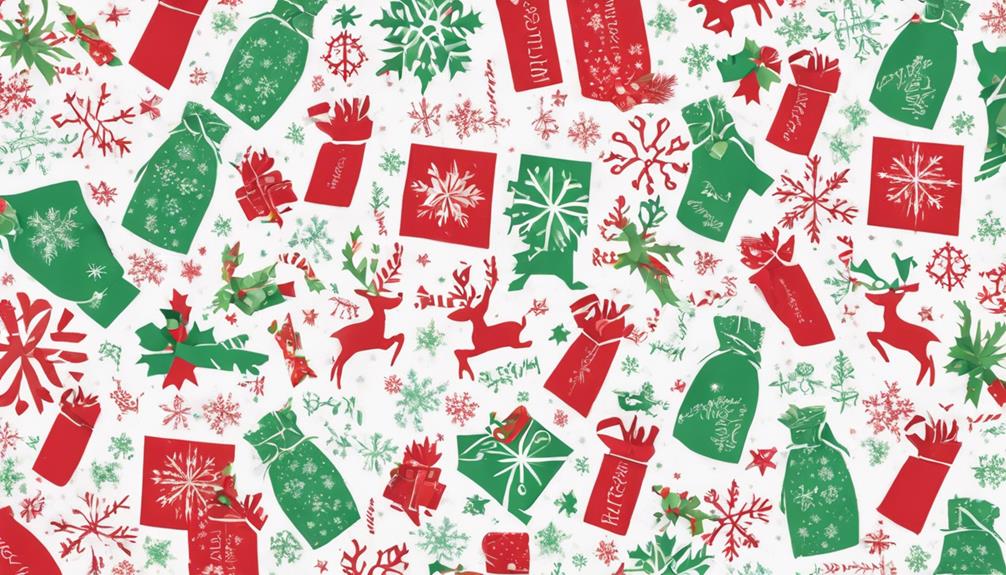
As we delve into the Festive Sign Language Christmas Wrapping Paper Guide, we find ourselves immersed in a realm where icons and festivities merge. Unearthing the ways in which these distinctive designs can enhance the experience of presenting gifts, we become captivated by the craftsmanship present in every design.
Join us in deciphering the secrets of incorporating sign language into your holiday presents, where every fold and tape reveal a story waiting to be told.
Key Takeaways
- Incorporate personalized ASL symbols for a unique touch in wrapping paper designs.
- Select visually appealing ASL phrases like 'jingle bells' and 'Christmas' for a festive feel.
- Enhance inclusivity with ASL signs for cultural representation and seasonal greetings.
- Elevate gift presentation by using quality paper and clear, bold ASL symbols for a statement.
Unique Ways to Incorporate Sign Language Symbols
Incorporating ASL symbols creatively into your Christmas wrapping paper designs can add a unique and meaningful touch to your holiday gift presentations. By including signs like 'gift', 'tree', and 'Santa', your wrapping paper becomes not just a covering but a beautiful expression of the holiday spirit.
Adding signs for 'jingle bells', 'reindeer', and 'cookie' can enhance the festive feel, making each gift-wrap a mini celebration. When you explore ASL signs for 'family', 'friends', and 'snow', you bring warmth and joy to your presents, conveying heartfelt holiday greetings.
Infusing your wrapping paper with signs for 'ornaments', 'lights', and 'music' adds a delightful and inclusive touch, creating a connection that goes beyond words. Let your creativity flow as you incorporate these ASL symbols, turning your wrapping paper into a work of art that speaks volumes about the love and care you put into your gifts.
Choosing the Right Sign Language Phrases

Let's talk about selecting the perfect sign language phrases to include on your Christmas wrapping paper.
We'll cover choosing phrases that are relevant, embracing cultural sensitivity, and ensuring visual appeal and clarity.
It's essential to convey the festive spirit accurately while making sure your message is respectful and visually appealing.
Relevant Sign Language Phrases
To create a visually captivating theme with your Christmas wrapping paper, we can carefully select relevant sign language phrases that embody the festive spirit. Here are some festive sign language phrases to consider:
- 'Christmas'
- 'tree'
- 'jammies'
- 'lights'
These signs can help you convey the joy and warmth of the holiday season through your gift wrapping. By incorporating these ASL signs into your design, you can add a unique and meaningful touch to your Christmas presents.
Stay tuned to learn more about how to ensure cultural sensitivity when using sign language in your holiday celebrations.
Cultural Sensitivity Considerations
Considering the importance of cultural sensitivity, we select sign language phrases that resonate with the festive spirit to enhance our Christmas wrapping paper designs.
Incorporating ASL Christmas signs like 'tree,' 'jammies,' 'lights,' and 'Eve' can add depth and meaning to the visuals. By including signs for activities such as 'movie,' 'music,' and 'Eve,' we capture the essence of holiday traditions like watching 'The Grinch' or enjoying sleigh rides.
To showcase holiday treats and symbols, signs for 'cookie,' 'milk,' 'gift,' 'stockings,' reindeer, Santa, jingle bells, and ornaments can bring joy to the design. Ensuring inclusivity with signs for Hanukkah, snow, fire, family, friends, and seasonal greetings further enhances the cultural sensitivity of our festive wrapping paper.
Visual Appeal and Clarity
To ensure our Christmas wrapping paper designs are visually appealing and clear, we carefully select ASL phrases with distinct hand shapes and movements that stand out effectively. When choosing the right sign language phrases for our festive designs, we focus on:
- Clear Hand Shapes: Opting for ASL signs that have easily recognizable hand shapes enhances clarity.
- Vibrant Colors: Using bold and bright colors alongside ASL signs ensures visibility and attractiveness.
- Popular Holiday Phrases: Selecting well-known ASL phrases like 'Merry Christmas' and 'Happy Holidays' increases the appeal to a broader audience.
- Festive Symbols: Incorporating holiday symbols like snowflakes, reindeer, and ornaments into our ASL designs adds a cheerful and festive touch.
DIY Sign Language Gift Wrap Ideas

Let's infuse your gift wrapping with creativity by incorporating common ASL signs like 'gift,' 'love,' and 'joy' for a personalized touch.
Adding holiday-themed ASL signs such as 'Christmas,' 'Santa,' 'reindeer,' and 'ornaments' can bring a festive feel to your presents.
Including colorful illustrations of hands signing 'Merry Christmas' and 'Happy New Year' adds a unique touch.
For a more personalized approach, draw symbols like snowflakes, trees, stockings, and jingle bells using ASL signs.
When selecting paper, consider using glossy or matte finishes to complement your ASL gift wrap designs.
These DIY ideas not only make your gift wrapping stand out but also showcase your appreciation for American Sign Language and the holiday spirit.
Get creative, have fun, and spread joy with your beautifully wrapped gifts this Christmas season.
Enhancing Your Presents With ASL Symbols

Infusing your presents with ASL symbols adds a unique and festive touch, making your gift wrapping stand out this holiday season. When it comes to enhancing your gifts with ASL symbols, here's how you can take your wrapping to the next level:
- Choose the Right Design: Select ASL Christmas wrapping paper featuring unique symbols inspired by sign language. These one-of-a-kind designs will add a special touch to your presents.
- Opt for Quality Paper: Use premium gloss paper with edge-to-edge printing for a smooth and clean appearance. The 24 × 36-inch size is perfect for wrapping gifts during the holiday season.
- Add a Personalized Touch: Enhance your gift presentation by incorporating festive ASL symbols. This won't only make your presents stand out but also spread holiday cheer.
- Make a Statement: Stand out from the crowd by using these unique wrapping papers that celebrate ASL and bring a touch of inclusivity to your gifts.
Enhance your wrapping skills with these tips and make your presents truly special this holiday season!
Tips for Beginners in Sign Language

Starting your journey in learning sign language can be both rewarding and empowering. To begin, mastering the ASL alphabet is crucial. Each letter has a specific handshape that forms the basis of signing. Practice fingerspelling words and short phrases to enhance your receptive skills, which will be particularly helpful when engaging in festive conversations.
Learning common ASL greetings and expressions used during Christmas and other celebrations will also be beneficial. Consider watching online tutorials or enrolling in ASL classes to improve your signing proficiency further. Additionally, engaging with the Deaf community can provide valuable opportunities to practice signing and gain cultural insights.
Celebrating Diversity With Sign Language Wrapping

We believe that incorporating sign language into your gift-wrapping this holiday season can truly showcase the beauty of diversity and inclusivity.
By using ASL symbols and signs on wrapping paper, we can celebrate the rich culture of the Deaf community while spreading joy through meaningful gestures.
Let's embrace the opportunity to promote understanding and support for communication diversity with every present we give.
Sign Language Representation
How can we infuse the spirit of diversity and inclusivity into our gift-giving this holiday season through sign language representation on wrapping paper?
Sign language wrapping paper offers a unique way to celebrate and promote awareness of the deaf community.
Here are four reasons why sign language representation on wrapping paper is significant:
- Symbol of Inclusivity: ASL wrapping paper symbolizes inclusivity and support for the deaf and hard of hearing community.
- Cultural Expression: Sign language designs showcase the beauty and importance of sign language as a form of communication and cultural expression.
- Awareness Building: Using sign language representations raises awareness about the significance of sign language during the holiday season.
- Special Touch: Choosing ASL-themed wrapping paper adds a special touch to gift-giving occasions and spreads awareness about sign language's beauty.
Inclusive Holiday Gifting
Celebrating diversity with sign language wrapping paper infuses holiday gifting with inclusivity and thoughtfulness. Language plays a vital role in how we connect and express ourselves, and incorporating ASL signs into wrapping paper designs is a beautiful way to honor that. By choosing sign language wrapping paper, you not only create a visually stunning gift but also promote awareness and appreciation for sign language as a form of communication. This conscious choice can help make the holiday season more inclusive and accessible for everyone, including the Deaf community and sign language enthusiasts.
| Inclusive Holiday Gifting | Benefits |
|---|---|
| Celebrates diversity | Adds uniqueness and thoughtfulness |
| Promotes awareness | Fosters inclusivity and accessibility |
Step-by-Step Guide to Sign Language Gift Wrapping
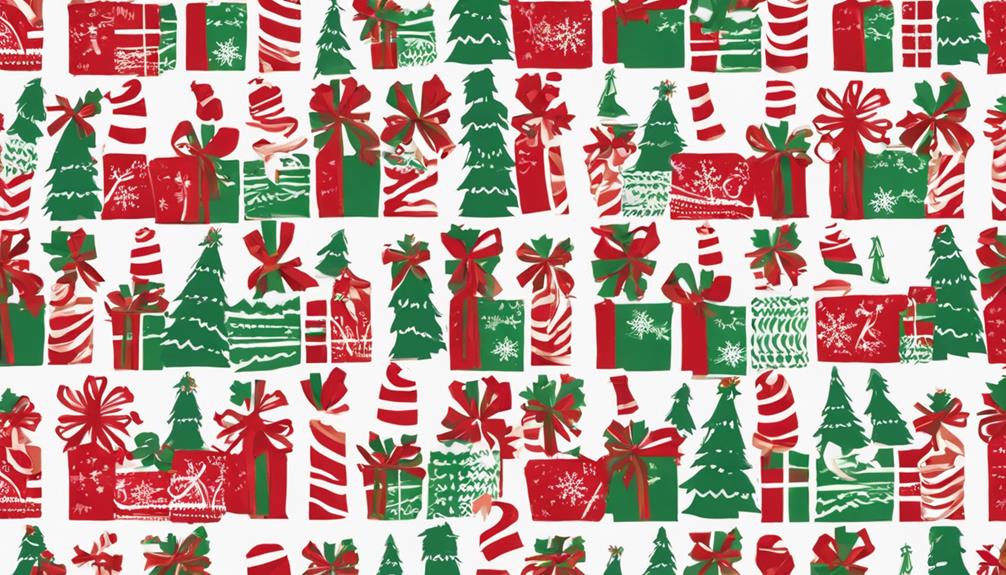
Incorporate festive sign language symbols like 'reindeer' and 'Santa' into your gift wrapping for a unique and meaningful touch. As you prepare to wrap your presents this Merry Christmas season, consider these steps to infuse sign language elements into your gift-giving experience:
- Learn the Signs: Start by familiarizing yourself with sign language symbols for holiday-themed items like 'reindeer' and 'Santa'. This will add a special touch to your wrapping.
- Get Creative: Explore inventive ways to incorporate signs for 'cookie' and 'milk' into your gift wrapping designs. These small details can make a big difference.
- Express Greetings: Practice signing 'Merry Christmas' and 'Happy New Year' to convey warm holiday wishes through your wrapped gifts. It adds a personal touch.
- Symbolize Relationships: Enhance the meaning behind your presents by using sign language gestures for 'family' and 'friends' while wrapping. It adds a heartfelt touch to your gift-giving experience.
Personalizing Gifts With Sign Language Elements
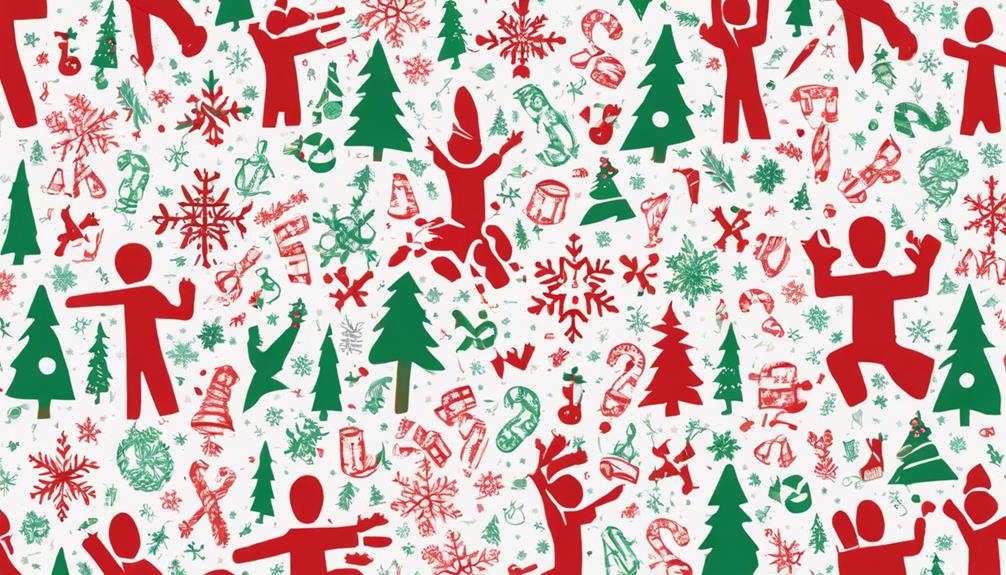
Let's infuse your gift-giving with a personal touch by incorporating sign language elements into the wrapping paper design. Adding symbols like 'I Love You' (ILY) and festive ASL signs such as 'Christmas,' 'tree,' and 'lights' can bring a unique flair to your presents.
By exploring creative ways to express holiday messages using sign language gestures and symbols, you can enhance the personal connection with your gifts. Imagine the joy on your recipient's face when they see the thoughtful inclusion of ASL signs and symbols in your presentation.
This attention to detail not only makes your gifts stand out but also creates a meaningful and inclusive gift-giving experience. Whether it's a small gesture or a grand gesture, integrating sign language elements into your wrapping paper design adds an extra layer of thoughtfulness that shows you care.
Let's make this holiday season unforgettable with personalized gifts that speak volumes through sign language.
Making Your Christmas Presents Meaningful

To make your Christmas presents truly meaningful, consider incorporating personal touches that reflect the recipient's interests or values. Here are four ways to add depth to your gift-giving this holiday season:
- Customized Gifts: Tailor your presents to the individual's preferences, such as a book from their favorite author or a handcrafted item that resonates with their style.
- Handwritten Notes: Include a heartfelt message expressing your appreciation for the person and the reasons why you chose this particular gift for them.
- Experiential Gifts: Give the gift of an experience, like tickets to a concert or a cooking class, creating lasting memories.
- Charitable Donations: Make a donation in the recipient's name to a cause they care about, spreading kindness and goodwill in their honor.
Frequently Asked Questions
How Do You Coordinate Christmas Wrapping Paper?
When coordinating Christmas wrapping paper, we consider the recipient's preferences, the overall gift wrapping theme, and the colors of the paper. Matching the style to the person's interests helps create a thoughtful touch.
Coordinating ribbons, bows, or accessories can enhance the look. Adding personal decorations or embellishments can make the gift wrapping special and unique.
It's all about creating a cohesive and festive presentation for the holidays.
How Do You Wrap a Piece of Paper for Christmas?
When wrapping a piece of paper for Christmas, we start by laying it flat on a clean, spacious surface.
Next, we carefully fold the paper around the item, ensuring a snug fit. Using tape, we secure the edges neatly.
To add a decorative touch, we might embellish with ribbons or a gift tag.
How Do You Wrap a Christmas Gift in a Creative Way?
Let's make wrapping gifts a joy! Get creative with unique touches like ribbons, bows, and personalized tags. Add a dash of flair with festive colors and patterns. Make it special by considering the recipient's tastes.
How Do You Wrap a Christmas Present in a Circle?
We start by placing the gift in the center of the wrapping paper.
Gently fold the paper up and around the gift, creating pleats to accommodate the circular shape.
Secure the paper with tape or a decorative ribbon to hold the circular form.
Smooth out any wrinkles or excess paper for a neat appearance.
Add bows or tags for a festive touch.
Enjoy the unique look of your circularly wrapped present!
Can Sign Language be Used for Different Types of Training, Such as Potty Training and Christmas Wrapping?
Yes, potty training with sign language can be incredibly effective for young children. Using simple signs for “potty,” “more,” and “all done” can help children communicate their needs before they can speak. And while sign language may not be as helpful in Christmas wrapping training, it can certainly be used as a valuable tool in teaching other skills.
Conclusion
As we wrap up our festive sign language Christmas wrapping paper guide, it's important to highlight that 70% of deaf individuals in the United States use American Sign Language as their primary means of communication.
By incorporating ASL symbols and phrases into your gift wrapping, you aren't only spreading holiday cheer but also celebrating and honoring the deaf community.
Let's continue to embrace diversity and inclusivity in all aspects of our lives, especially during this special season of giving.
Sign Language
Mastering Potty Training: A Sign Language Guide
In the realm of toilet training, perfecting the skill of communication might appear to be a daunting challenge. Nevertheless, by incorporating sign language into the mix, an entirely new range of opportunities becomes available for both parents and young children.
Imagine the convenience of being able to understand your little one's needs without the usual frustration and guesswork. Intrigued by the idea of enhancing your potty training journey with sign language? Let's explore how this innovative approach can revolutionize the way you and your child navigate this developmental milestone.
Key Takeaways
- Incorporating sign language enhances clear communication and understanding in potty training.
- Consistent use of key signs like 'potty,' 'pee,' and 'poop' supports effective communication.
- Customizing signs to child's preferences promotes engagement and successful learning.
- Seeking expert guidance and maintaining a positive attitude are crucial for successful potty training with sign language.
Incorporating Sign Language Into Potty Training
How can we effectively incorporate sign language into potty training to enhance communication and reduce frustration for children?
When it comes to potty training, utilizing sign language can be a game-changer. Introducing signs like 'potty,' 'pee,' and 'poop' equips children with the means to express their needs clearly, even before they can verbalize effectively. This not only reduces potential frustration but also fosters a sense of independence and empowerment in the child.
Understanding a child's readiness for potty training is crucial. Introducing signs related to 'change,' 'diaper,' 'dirty,' and 'clean' can support a comprehensive approach to potty training. These signs help in creating a structured routine and aiding the child in understanding the process better. Additionally, sign language allows for discreet communication of potty needs, which can be particularly useful in public or crowded settings.
Using Sign Language for Communication

When navigating potty training with sign language, incorporating simple signs like 'potty,' 'pee,' and 'poop' can significantly enhance communication and understanding for both parents and children. Using sign language during the potty training process can be a game-changer, making it easier for little ones to express their needs and for parents to support them effectively.
Here are some tips for utilizing sign language in potty training:
- Start Early: Introduce basic signs like 'potty' and 'toilet' when you notice signs of readiness in your child.
- Consistency is Key: Use consistent signs for 'pee' and 'poop' to help your child associate the signs with the actions.
- Positive Reinforcement: Celebrate every successful attempt to use the potty with enthusiastic praise and encouragement, reinforcing the connection between the sign and the desired behavior.
Key Sign Language Signs for Potty Training
As we move forward into exploring the key sign language signs for potty training, it's essential to understand that learning these signs can greatly facilitate communication and success in the potty training journey.
When you start introducing basic sign language signs to a one-year-old for potty training, focusing on signs like 'potty,' 'pee,' and 'poop' can be immensely helpful. These signs allow the child to communicate their needs effectively. Families often find that just using the 'potty' sign alone can be a game-changer in the potty training process.
Additionally, incorporating signs like 'change,' 'diaper,' 'dirty,' 'clean,' and 'all done' can further enhance communication and understanding during potty training. By teaching these signs early on, you create a solid foundation for successful potty training.
Creating Custom Signs for Potty Training

Crafting personalized signs for potty training can be a creative and effective way to enhance communication and engagement with your child. By tailoring signs to your child's preferences and understanding, you can create a customized approach that fosters meaningful learning experiences. Here are some tips to help you create custom signs for potty training:
- Consider Your Child's Preferences: Take into account what interests your child and incorporate those elements into the signs. This can make the learning process more engaging and enjoyable for them.
- Promote Communication and Engagement: Personalized signs help strengthen the bond between you and your child during potty training. They enhance communication and engagement, making the experience more interactive and effective.
- Embrace Flexibility and Creativity: Using custom signs allows for flexibility in teaching potty-related concepts. Be creative in designing signs that are memorable and meaningful to your child, promoting successful learning in a fun and engaging way.
Tips for Success in Potty Training With Sign Language
To ensure success in potty training with sign language, it's essential to implement effective strategies that cater to your child's learning style and needs. When starting potty training with your little one, consider seeking guidance from a potty training expert who can provide valuable insights on incorporating sign language. It's crucial to help your child recognize the signs for potty-related actions, making the process more manageable and less frustrating for both of you.
Once you believe your child is ready, introduce sign potty signals consistently. By using sign language, you make it easy for your child to understand and communicate their needs effectively. Remember, consistency is key in reinforcing these signals. Make sure to have everything you need for potty training readily available and create a supportive environment for your child to feel comfortable and encouraged throughout the process. With the right approach and a positive attitude, you can navigate potty training with sign language successfully.
Frequently Asked Questions
How Do You Potty Train in Sign Language?
We potty train in sign language by teaching signs like 'potty,' 'pee,' and 'poop' to improve communication. Different sign languages such as ASL, BSL, and Makaton have specific signs for these concepts. Using signs can help toddlers express their needs during training.
Incorporating signs for 'change,' 'diaper,' 'dirty,' 'clean,' and 'all done' can enhance the process. Watching videos demonstrating potty training signs can also be very helpful.
What Is the Basic Sign Language for Toilet?
We can help with that!
The basic sign language for toilet varies depending on the sign language being used. For example, American Sign Language (ASL) uses a fist with the thumb inserted between fingers to signify toilet. British Sign Language (BSL) involves drawing a circle in the air to indicate toilet. Understanding these differences can aid in effective communication and enhance potty training for children.
Let's guide you through this journey!
What Is the Sign Language Gesture for Potty?
Sure thing!
The sign language gesture for potty varies across different sign languages. For example, in American Sign Language (ASL), it involves using a fist with the thumb inserted between fingers.
In British Sign Language (BSL), drawing a circle in the air signifies potty.
Makaton combines signs for toilet and bowl to represent potty.
These unique gestures help in effective communication during potty training.
What Are the Red Flags for Potty Training?
When potty training, red flags like extreme resistance to the toilet, lack of progress, frequent accidents, or physical discomfort can signal issues. These signs could indicate readiness problems, emotional concerns, or physical discomfort.
It's important to address these red flags with patience, understanding, and maybe even seeking advice from healthcare providers or specialists to support the child in their potty training journey.
Can the M Sign in Sign Language Help with Potty Training?
Mastering the M sign in sign language can be a helpful tool in potty training for children. Using the M sign when teaching them about using the bathroom can create a visual cue that reinforces the concept and makes it easier for them to understand and remember.
Conclusion
So there you have it, folks! With the power of sign language, potty training just got a whole lot easier. Say goodbye to messy accidents and frustrating miscommunications, and hello to a smoother potty training journey.
Remember, patience and consistency are key, but with these handy signs in your toolbox, you'll be well on your way to success. Happy signing and happy potty training!
Jamie is one of the creative forces behind the words that resonate with our audience at Deaf Vibes. With a passion for storytelling and advocacy, Jamie delves into topics that matter deeply to the deaf and hard-of-hearing community. Jamie’s articles are crafted with empathy, insight, and a commitment to positive change, from exploring the latest advancements in hearing technologies to shedding light on the everyday challenges and victories of those within the community. Jamie believes in the power of shared stories to inspire action, foster understanding, and create a more inclusive world for everyone.
Sign Language
Mastering the Art of Poop Sign Language
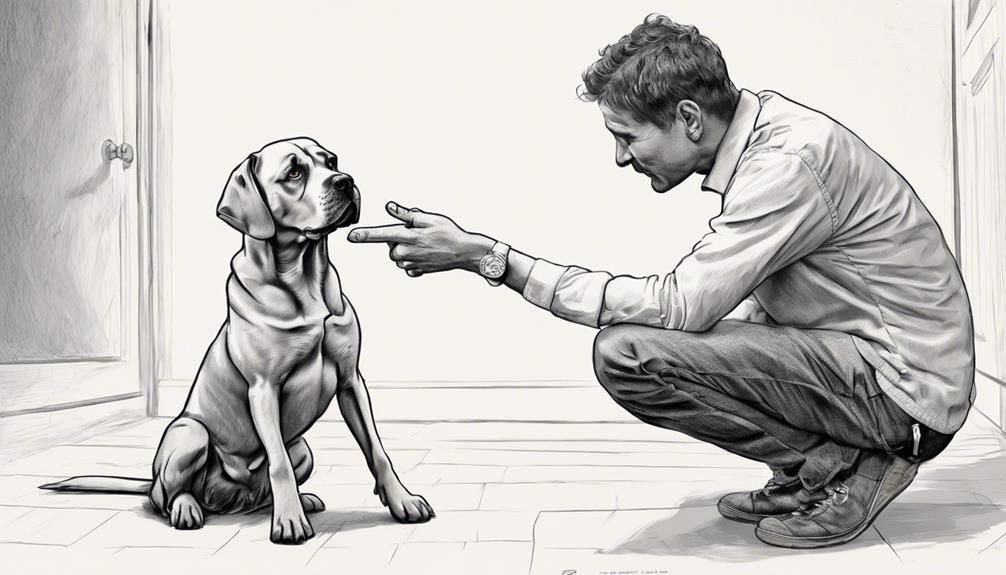
Venturing into the fascinating realm of learning poop sign language, we embark on an unusual journey of interacting with our infants. Though it might appear strange initially, the importance of grasping these nuanced signals is truly indispensable.
By deciphering the language of poop signals, we unlock a gateway to better comprehend our babies' needs and emotions. But how exactly do we embark on this journey of decoding their non-verbal messages? Let's explore the intricacies together.
Key Takeaways
- Understanding poop signals aids in meeting babies' needs effectively.
- Recognizing cues prevents common issues like diaper rash.
- Acknowledging signals strengthens parent-child communication.
- Using baby sign language empowers infants to communicate early.
The Importance of Poop Signals

Recognizing and responding promptly to poop signals in baby sign language is crucial for ensuring infants' comfort and preventing common issues like diaper rash. By understanding and acknowledging these signals, parents can establish a strong foundation for effective parent-child communication. When caregivers pay attention to their baby's poop cues, they not only address the child's immediate needs but also foster a sense of trust and understanding between them.
Utilizing baby sign language for poop signals empowers infants to communicate their bodily functions early on, promoting a healthier approach to toileting habits. This proactive approach not only aids in preventing discomfort and skin irritations but also sets the stage for a smoother potty training experience. The ability to interpret and act upon these signals enhances the parent-child bond, creating a supportive environment where the child feels heard and cared for. Ultimately, incorporating poop signals into daily routines strengthens the connection between parent and child, laying the groundwork for effective communication and mutual respect.
Understanding Color and Consistency
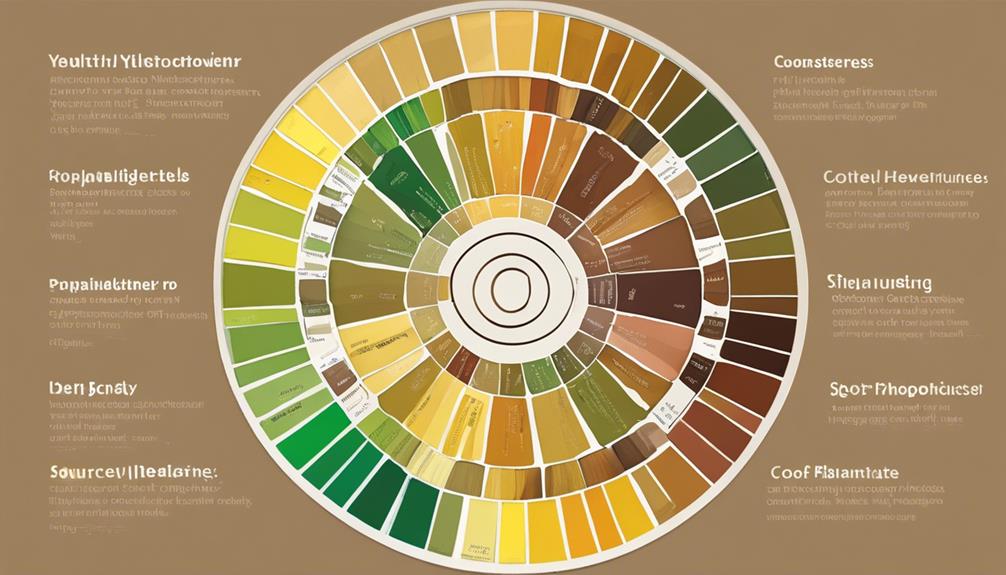
Understanding the color and consistency of a baby's poop plays a vital role in gauging their health and digestive well-being. When it comes to our second baby, we must pay close attention to these indicators.
Normal breastfed baby poop is typically yellow, seedy, and loose, while formula-fed baby poop tends to be tan or yellow and firmer. Green poop in a second baby may signal a foremilk/hindmilk imbalance or a reaction to certain foods. Additionally, red or black poop could indicate blood in the stool, warranting immediate attention.
Watery or mucus-filled poop might suggest a possible infection or intolerance, while hard, pellet-like poop could point to constipation. By monitoring the color and consistency of our second baby's poop, we can promptly identify any potential issues and seek appropriate medical advice if necessary.
Staying informed and observant is key to ensuring our baby's well-being and digestive health.
Decoding Frequency and Texture

Deciphering the frequency and texture of our baby's poop provides valuable insights into their digestive health and overall well-being. Monitoring these factors can help us understand what is normal for our little one and when to seek medical advice. Different babies have varying poop patterns, from multiple daily bowel movements to a few days between each. Breastfed babies usually have softer, more frequent stools compared to formula-fed infants. Changes in texture, such as watery or mucousy poop, can indicate issues like diarrhea or infection, warranting attention from a healthcare provider. While green poop may not always be a cause for concern, it can be influenced by diet, illness, or medication.
| Frequency | Texture | Indicators |
|---|---|---|
| Multiple times a day | Soft and formed | Healthy digestive system |
| Few days between | Watery or mucousy | Potential issues; seek medical advice |
| Varies | Green | Factors like diet, illness, or medication |
Regularly observing and analyzing our baby's poop allows us to detect changes, address concerns promptly, and ensure their well-being. Thank you so much.
Common Poop Signs to Watch For
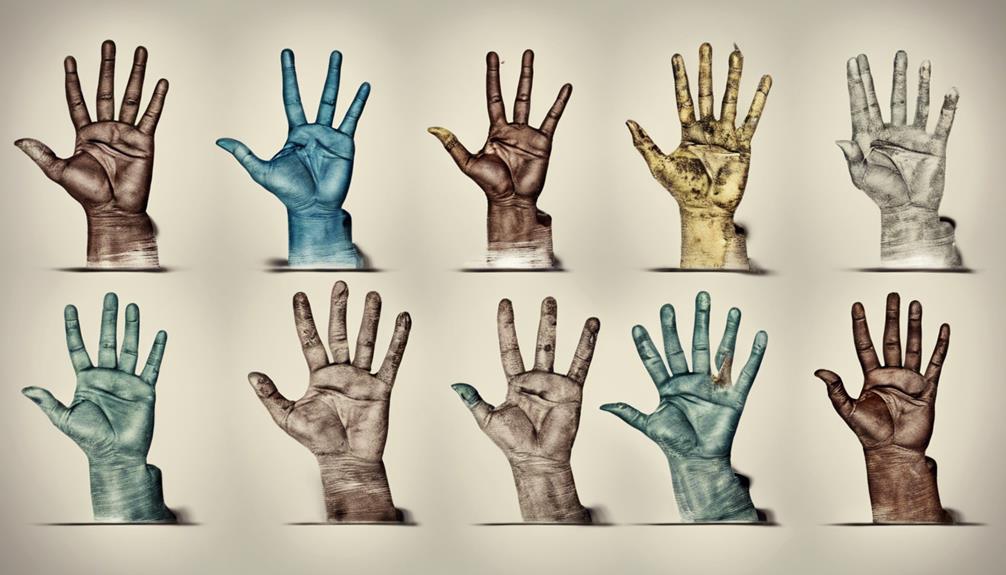
We can easily spot common poop signs by observing our baby's behavior and cues. Look for signs of discomfort or straining, as these may indicate the need to poop. Changes in your baby's facial expressions or body language can also be telling signals that they need to go.
Watch out for cues like grunting, squirming, or sudden quietness, as these could indicate an impending bowel movement. By paying attention to the timing of feeding and diaper changes, you can anticipate when your baby might need to poop.
Keeping track of your baby's poop patterns and behaviors will help you better understand their cues for bowel movements. These subtle signs are your baby's way of communicating with you, letting you know when they need your care and attention.
Tips for Mastering Poop Sign Language
To excel in mastering poop sign language, consistent practice and patience are key for effective communication with your baby. It's essential to establish a routine and stick to it to help your baby understand and learn the signs associated with poop. Here are three valuable tips for mastering poop sign language:
- Repetition is Key: Practice the poop sign consistently throughout the day, especially during diaper changes or potty time. Repetition helps reinforce the association between the sign and its meaning, making it easier for your baby to grasp.
- Stay Positive and Encouraging: Celebrate small victories when your baby attempts to use the poop sign, even if they don't get it right initially. Positive reinforcement creates a supportive environment that encourages your baby to continue learning and communicating effectively.
- Be Patient and Observant: Each baby learns at their own pace, so patience is crucial. Pay attention to your baby's cues and responses to the poop sign, adjusting your approach as needed to facilitate understanding.
Thank you so much for watching.
Frequently Asked Questions
What Is the Sign Language Symbol for Poop?
The sign language symbol for poop involves making a fist with one hand and using the thumb of the other hand to simulate the action of pulling down. It's a simple yet effective way for babies to communicate their bathroom needs.
This sign can aid in fostering better communication and understanding between caregivers and infants. By teaching and consistently using this sign, babies can express their needs and feelings more clearly, promoting a stronger bond and smoother interactions.
What Is the Sign Language for Potty?
The sign language for potty involves using both hands to mimic sitting on a toilet. It's a simple and intuitive sign that can aid in communication for babies and caregivers.
Teaching babies this sign can help them express their need to use the toilet early on. Consistency in using the potty sign establishes a routine and promotes successful potty training.
Encouraging its use can lead to independence and effective communication about bathroom needs.
How Do You Say Pee Pee in Sign Language?
We express 'pee pee' in sign language by tapping the index and middle fingers of one hand on the palm of the other hand. This sign is commonly used with babies learning sign language to facilitate communication about urination.
Teaching babies signs for bodily functions like 'pee pee' can help them express their needs effectively. Consistent use of this sign reinforces understanding and encourages babies to use it to communicate their needs, fostering early communication skills.
What Does Pee Look Like in Sign Language?
In sign language, the sign for pee involves forming a 'P' shape with your dominant hand and giving it a slight shake. This gesture is commonly paired with the toilet sign to convey the need to use the bathroom.
Teaching babies this sign can aid in early communication of their bathroom needs. Consistent use of the pee sign reinforces its meaning and helps babies grasp and use it effectively, fostering better communication and bonding between caregivers and infants.
Conclusion
And there you have it, folks! Mastering the art of poop sign language may seem like a strange concept, but it's a game-changer for parents and babies alike.
By understanding the importance of poop signals, decoding color and consistency, and recognizing common signs, you can navigate the world of baby communication with ease.
So, embrace the poop sign language journey and watch your bond with your little one grow stronger than ever before!
Jamie is one of the creative forces behind the words that resonate with our audience at Deaf Vibes. With a passion for storytelling and advocacy, Jamie delves into topics that matter deeply to the deaf and hard-of-hearing community. Jamie’s articles are crafted with empathy, insight, and a commitment to positive change, from exploring the latest advancements in hearing technologies to shedding light on the everyday challenges and victories of those within the community. Jamie believes in the power of shared stories to inspire action, foster understanding, and create a more inclusive world for everyone.
-

 Navigating the VA System2 months ago
Navigating the VA System2 months agoVA Hearing Loss Rating Chart: Understanding Disability Compensation
-

 Therapies and Interventions3 weeks ago
Therapies and Interventions3 weeks ago10 Auditory Processing Goals for Effective Speech Therapy
-

 Vetted2 months ago
Vetted2 months ago15 Best Oticon Hearing Aids to Improve Your Hearing in 2024
-

 Tinnitus2 months ago
Tinnitus2 months agoVA's Rating System for Tinnitus and Hearing Loss Explained
-

 Navigating the VA System1 month ago
Navigating the VA System1 month agoUnderstanding Bilateral Hearing Loss VA Rating Criteria
-

 Sign Language2 weeks ago
Sign Language2 weeks agoMastering the Art of Signing Letters in Sign Language
-

 Sign Language3 weeks ago
Sign Language3 weeks agoSign Language Emoji Translator: How to Communicate With Gestures
-

 Sign Language3 months ago
Sign Language3 months agoMedical Sign Language PDF: A Comprehensive How-To Guide



















